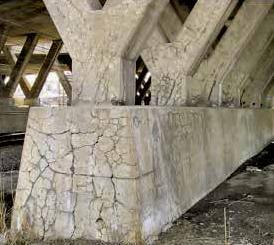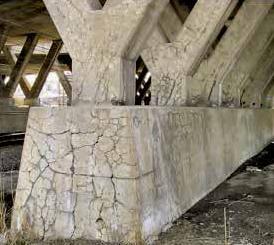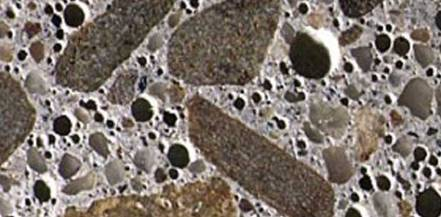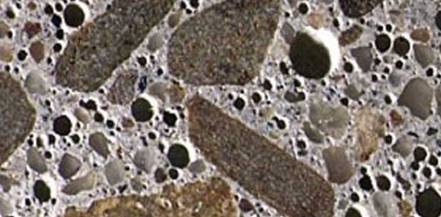Alkali-Silica Reaction (ASR) Mitigation
ASR is a swelling reaction that occurs over time in concrete between the highly alkaline cement paste and the reactive non-crystalline (amorphous) silica found in many common aggregates. This reaction causes expansion by the formation of a soluble and viscous gel. This hygroscopic gel swells and exerts an expansive pressure inside the siliceous aggregate over time, causing spalling and loss of strength of the concrete, finally leading to its failure.
ASR can cause serious cracking in concrete, resulting in critical structural problems that can even force the demolition of a particular structure.
Geofortis Natural Pozzolans quickly and preferentially react with the cement alkalis without the formation of an expansive pressure, because siliceous minerals in fine particles convert to beneficial compounds that add strength and reduce permeability.
A successful ASR test indicates expansion less than 0.10% after 14 days.







